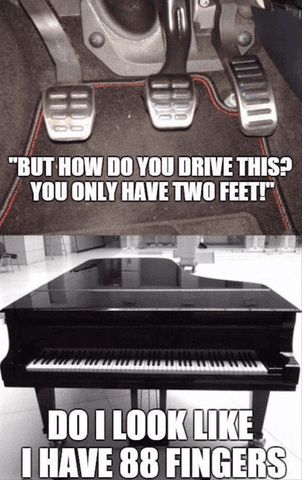5 tips for aspiring keyboardists, electricpianists
Are you passionate about keyboard tools and want to get started immediately. Getting started is the most important thing to know!
From structure to technology

Keyboards have one decisive advantage: unlike other instruments, the tones on the keyboard are very intelligible, clear and logically structured. Not to mention, they have a variety of sounds and functions. You also need to understand the style of play and manual play technique. Only then does the electric keyboard really shine like a tool.
1.Basic knowledge is useful!
The first trip with black and white keys is disorganized, happy, but dissonant. You shouldn't practice too long and learn to name the keys from the beginning. You need this knowledge for both melodies and harmonies. You can stick the names of your notes with small sticky strips or dots as a reminder. Various entry-level keyboards and electric pianos also feature backlighting. And you are ready to start your journey.
2.Play simple melodies almost immediately and notice the fingering
Usually the first step is to perform simple melodies, especially with the right hand. There are only five fingers on the hand, but you can deal with this "mechanical" problem. You can grasp the C major scale very early by practicing sensible positioning of your fingers, feeling the dynamics of the keys, and learning to overlap. Start with just a few notes. First, you will want to develop a sense of the keyboard and touch technique.

3.Exercise fingers for left hand tracking
Starter keyboards often have a strip-in-a-box accompaniment section with automatic accompaniment. Chords, backing patterns, and rhythms are called out using the chord fingers with your left hand. In your repertoire, you will have the most important fundamental chords as well as inversions. Don't worry, there are a limited number of them. To get started, you only need three fingers, the chord in its basic form, and two inversions.
4.Synchronizing left and right hands
Hands must learn to play at different tempos at the same time. The left hand plays the chords, the right hand plays the melody. Or the left plays the bass line, the right picks up the harmony. There are a number of options. Take your time, train slowly and calmly. This is the only way to avoid disappointment.

5.A structured approach is synonymous with motivation
The sensible approach remains if you set achievable goals for yourself. A self-created learning plan is useful because you really get to know the topic in depth. Without knowing where you are going, you cannot set goals for yourself. Small goals are always better and lead to small motivating “successes”. These stages can be as follows:
- Button names and key notes
- Practice playing a melody and reaching out with your right hand separately
- Practice chords with your left hand
- Exercise gently in simultaneous and independent play with both hands
- Tools and accessories: consider a few additional equipmen

 ARTURIA Instruments
ARTURIA Instruments
 Drums for Therapy
Drums for Therapy  Harps
Harps
 Lyres
Lyres
 Didgeridoo
Didgeridoo
 Sound Processing
Sound Processing
 Mixing Consoles
Mixing Consoles
 Vinyl Players
Vinyl Players
 Phono Correctors
Phono Correctors
 Karaoke
Karaoke
 Stands and Holders
Stands and Holders
 Trolleys
Trolleys
 Computers, Electronics
Computers, Electronics
Comments